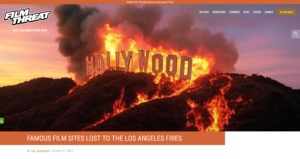My show chugged along in happy quiet obscurity for quite a while, and that was fine with me. Of course I wanted to do my best when it came to sharing great books with my kids, other people’s kids, and the kind of awesome grownups who haven’t forgotten how important children’s literature is. I am of course happy and overwhelmed and bewildered now that the show is gaining so much traction. But I will try to just keep doing what I have been doing and not let this change my life much. I wanted to make a few promises to those who listen to and watch the show, though:
1. I have never and will never accept payment to endorse or review a book.
I do accept complimentary review copies of books (this is completely standard practice for book reviewers), although these mostly arrive in digital format. When I am done reviewing a physical book, I donate it to a local school or public library, and when I am done reviewing a digital copy I delete it. These standards are important to me so that I keep myself honest, and that I can build a reputation as someone who is trustworthy. This doesn’t mean I might never have some sort of paid arrangement with any company, ever (say, if I ran ads on the show), but if that’s ever the case I will make it very clear to you. I will only ever select books to talk about on this show because I think they are high quality and would be good for families and educators to give to children.
2. I’m not going to run ads for now
My professional background is in education, copywriting, editing, and tutoring. All of this “monetization” stuff is way over my head and I’m not interested in jumping in before I understand what the results will be. I’m also lucky in that I have a comfortable home, a wonderful family, and enough to live on. I don’t need to run ads on my show. I would rather keep bringing people together over great stories.
3. I do have some fun ideas for merch, though
I feel like I understand merch a bit better than ads and sponsors, and I have some fun literary-themed ideas for merch. You’ll start seeing these things soon, and any funds I get will be used to upgrade my gear. I am currently just recording everything right from my laptop, and I know that a better camera and microphone would make things better for viewers and listeners. I don’t think I need to get too crazy with my tech setup, but a few other little improvements would make it easier for me to record more often.
4. After talking with my family, my kids will still be on the show sometimes
My children started appearing on the show because I literally couldn’t keep them off of it. They love books even more than I do and they often have much more interesting ideas about them than me. My concern has always been making sure that they have a healthy, normal childhood. I do not approve of adults who monetize their children. Whenever my kids have appeared on the show, it was because they wanted to. They have come to me with great ideas, and my older daughter is already turning into a thoughtful interviewer when we have guests on. But I will never make them appear on the show, and I will never tell them what to say. If they ever feel like they don’t want to do this any more, that’s fine. Family comes first, even if it means deleting old episodes that they are no longer happy with. If I ever feel their happiness, privacy, or safety is compromised by the show, they will no longer participate.
5. THANKS FOR LISTENING!
I know I say this in every episode, but it’s because I mean it. I will never get tired of saying it. Thank you! Thank you to longtime listeners, and thank you to newcomers. I hope this show can continute to be a nice friendly place where we all share our love of books together.

